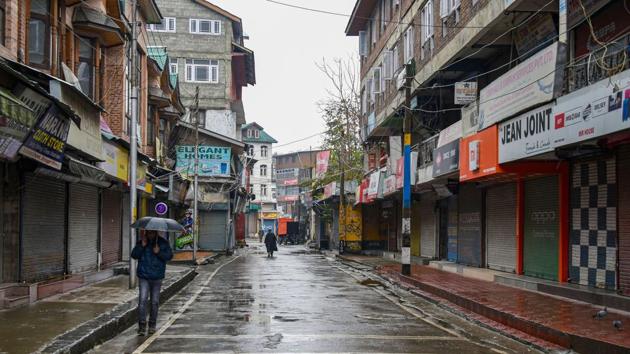Normalcy in the Valley still some distance away | Opinion
Since the decision to remove its special status and bifurcate the region into two Union territories on August 5, a lot of the fears of what might happen did not play out on the ground.
Contrary to what home minister Amit Shah said in Parliament on Wednesday, Kashmir is not “completely normal”.

It can’t be because there are as many as 600 people, including senior politicians, in custody for over three months, by the home ministry’s count.
Since the decision to remove its special status and bifurcate the region into two Union territories on August 5, a lot of the fears of what might happen did not play out on the ground. There were no desertions from the police, nor did the people throng the streets to pelt stones, a popular form of protest in Kashmir.
A numb population just fell silent, shocked by the sudden move, especially because the then governor, Satya Pal Malik, had assured them that there was no move underway to either abrogate Article 370 or annul Article 35(A) that set apart privileges like government jobs and property ownership for those deemed to be permanent citizens of Kashmir.
That feeling of numbness took different shapes. For three months, parents refused to send their children to school and shops stayed mostly shut. Yes, they have reopened now – for longer than the earlier stipulated three hours but it would be wrong to see this as a return to normalcy. It would be wrong also to analyse the improving attendance in schools and public transport plying on the roads as signs of normalcy.
Kashmiri children have a right to education and a better morrow (as their parents realise) and life has to go on for shopkeepers and businessmen, who have little choice but to return to work. They have families to feed and have the right to script a better future for them.
This is not the first time that the valley has returned to “normalcy”. Bustling markets, overcrowded picnic spots in picturesque Gulmarg and Pahalgam and selfie-taking tourists have masked the actual ground situation several times in the past. This time, it isn’t even sure whether snow-bound Kashmir will see foreigners skiing their way through the slopes and if the winter months will stay silent and free from terrorist violence.
Normalcy, this time, has more to do with Delhi than with the Kashmiris. The people there are angry, weary and fatigued. The pro-India constituency, locals claim, has shrunk to its lowest. Some people say they’ve lost faith in Parliament, in the Supreme Court and their own leaders including the Abdullahs and the Muftis.
The Bharatiya Janata Party (BJP)-led government at the Centre checked an ideological box on August 5 and nobody can argue that the government will ever lose control of the territory. The Kashmiri too knows this.
But the fundamental question is whether India is only interested in the territory. The answer should obviously be in the negative, and if the government wants Kashmiris to feel like Indian citizens, it has a lot of hard work to do. The trust deficit between Srinagar and Delhi seems to be at its widest.
The government needs to work hard at forging an emotional bond with the Valley and accept that like previous governments, it too is guilty on several counts. Guilty of believing that the military can solve the problem for them. Guilty of believing that economic packages can help buy a way out of what is essentially a political problem that needs sustained dialogue. Guilty of believing that the cleaving of a state is a magic bullet that will rid the Valley of an insurgency that while it may have been (and continues to be) instigated from across the border, is also being sustained by the locals.
The first small step is acceptance. Normalcy is still some distance away.






